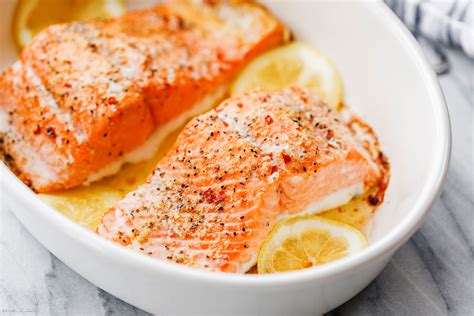How Long to Bake Salmon in the Oven: A Guide to Perfectly Cooked Salmon
Baking salmon in the oven is a fantastic way to enjoy this healthy and delicious fish. But knowing how long to bake it for perfectly cooked results can be tricky. This guide will walk you through everything you need to know to achieve flaky, moist salmon every time.
Understanding Baking Time Variables
The time it takes to bake salmon depends on several factors:
- Thickness of the fillet: Thicker fillets require longer baking times than thinner ones.
- Oven temperature: Higher temperatures will cook the salmon faster, but may also lead to dryness if you're not careful.
- Desired doneness: Do you prefer your salmon medium-rare, medium, or well-done? This significantly impacts cooking time.
Baking Time Chart: A Quick Reference
This chart provides approximate baking times for salmon fillets of different thicknesses at a common oven temperature of 400°F (200°C). Remember these are estimates, and you should always check for doneness using a meat thermometer.
| Fillet Thickness (inches) | Baking Time (minutes) | Doneness |
|---|---|---|
| ½ - ¾ inch | 12-15 minutes | Medium-rare to Medium |
| ¾ - 1 inch | 15-18 minutes | Medium to Medium-well |
| 1 - 1 ½ inches | 18-22 minutes | Medium-well to Well-done |
Note: These times are for fillets that are roughly the same thickness throughout. Uneven fillets might require adjustments.
How to Check for Doneness:
The most reliable method is using a food thermometer. Insert the thermometer into the thickest part of the fillet; it should register:
- 125°F (52°C): Medium-rare
- 130°F (54°C): Medium
- 145°F (63°C): Well-done
Tips for Perfectly Baked Salmon
- Preheat your oven: Ensure your oven is fully preheated before placing the salmon in. This ensures even cooking.
- Use parchment paper or foil: This prevents sticking and makes cleanup a breeze.
- Don't overcrowd the pan: Allow space between fillets for proper air circulation.
- Season generously: Experiment with different herbs, spices, and citrus for a flavorful experience. Salt and pepper are always a great starting point.
- Baste halfway through: For extra moisture, baste the salmon with melted butter or olive oil halfway through the cooking process.
Troubleshooting Common Problems
- Dry Salmon: This usually indicates overcooking. Use a thermometer to check for doneness and reduce baking time in future attempts.
- Undercooked Salmon: If your salmon is still translucent in the center, return it to the oven for a few more minutes. Always check with a thermometer to ensure it reaches a safe internal temperature.
Conclusion: Mastering the Art of Baked Salmon
Baking salmon is a simple yet rewarding cooking technique. By understanding the factors that influence baking time and following these tips, you can confidently achieve perfectly cooked, flavorful salmon every time. Remember to always check for doneness using a food thermometer for the best results!
